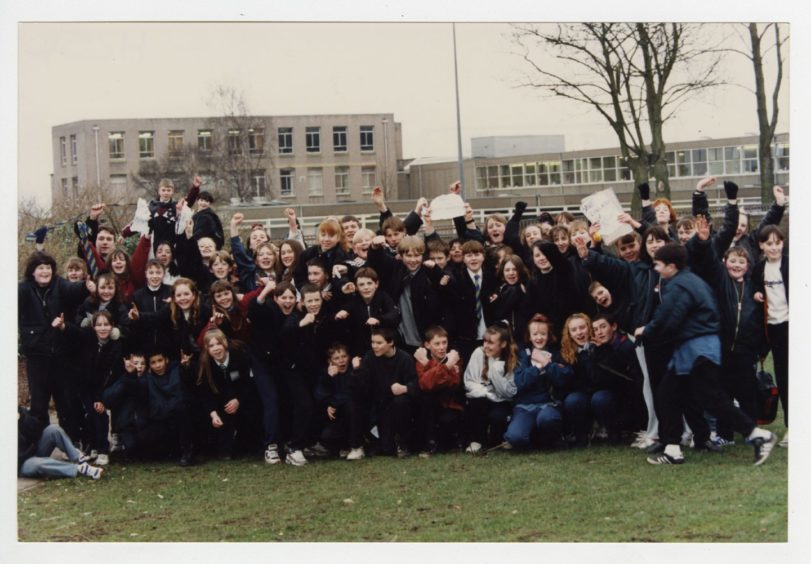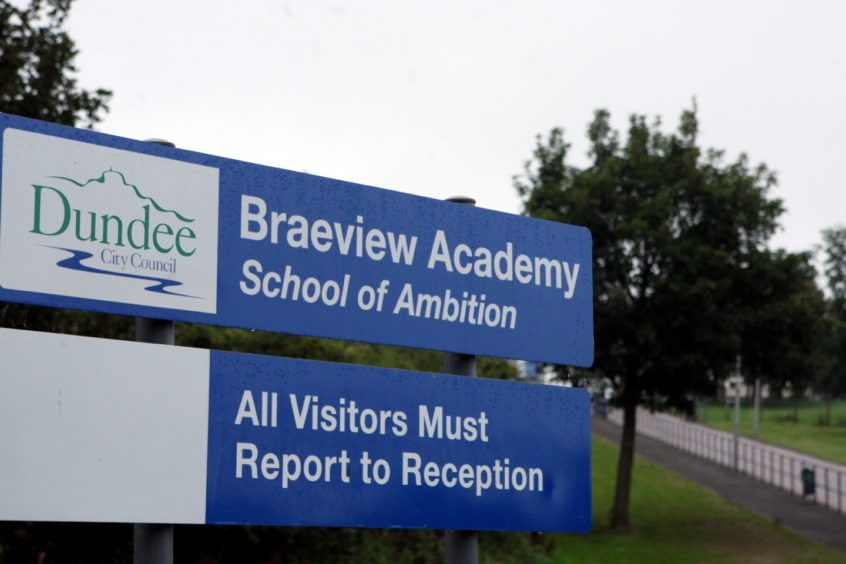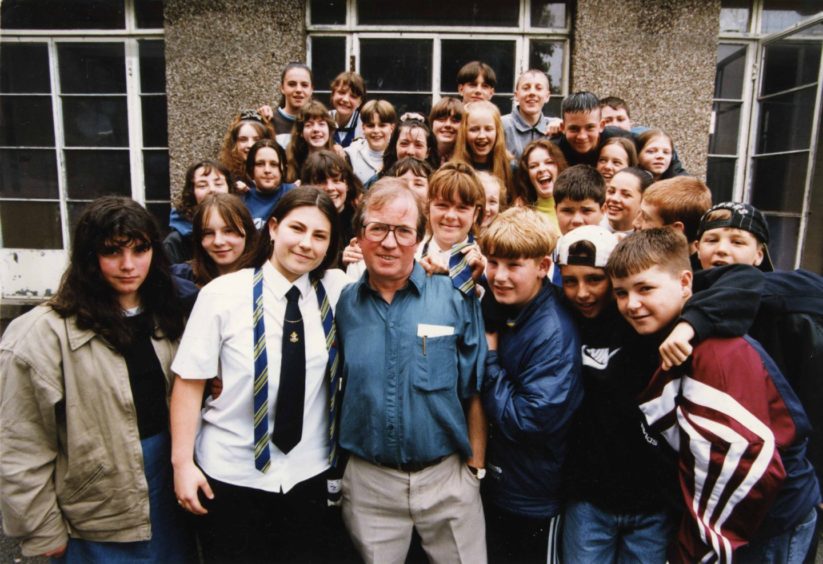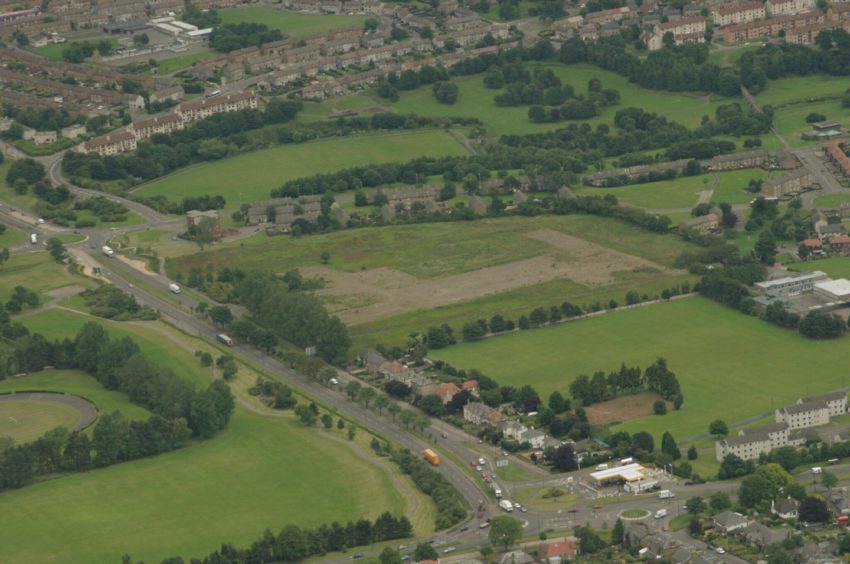The final bell sounded for Linlathen High School 25 years ago to mark the closing of its doors for the final time.
Linlathen was a junior secondary school when it opened in 1958 before growing to a roll of 1,250 pupils by 1973 after becoming a high school.
The school drew pupils from the Mill o’ Mains, Fintry and Linlathen estates, situated on the right side of the Forfar Road to the north of Kingsway.
Closure first mooted in 1992
The proposed closure of Linlathen High first reared its ugly head when a major fire in October 1992 destroyed the school’s science laboratories.
Tayside Regional Council considered three options which were: closure of the school; the re-instatement of the destroyed labs on the same site and the school’s capacity maintained at 1,100 pupils; or the reduction of the school’s capacity to 700 pupils and the refurbishment of the building with the new labs contained in surplus classrooms.
The third option was considered to offer the school a secure future, and the decision was taken to spend £1.6 million to remodel the school for a maximum of 700 pupils.
Linlathen was never allowed to achieve the outgoing regional council’s aim of becoming a 700-pupil school after the completion of the refurbishment.
The new city council followed a different agenda.
A report drawn up by education director Anne Wilson earmarked Linlathen High and Rockwell High for closure along with primary schools Greenfield, West March, St Matthew’s and Rockwell to save £2m from its budget.
Books before buildings
Education convenor John Kemp warned the alternative would be to cut funds to the whole service.
He said: “Every pupil in Dundee will suffer and the city will be much poorer for that.
“Teachers jobs will have to go, classes will get larger and there will be fewer materials to go round.
“The choice of curriculum in many secondary schools will also be more limited.
“Surely books are more important than buildings?”
Dundee’s Labour administration forged ahead with the Linlathen closure which was objected to by the school board, parents and campaigners.
The council would renege on a Labour election pledge through successive minority administrations on Tayside Region since 1985 that they would not close any schools.
Throughout the three-month consultation process the education authorities heard arguments against closure which centred round the school’s place at the heart of the community, its unrivalled disabled access, state-of-the-art science laboratories, and the safety and cost of having children travel extra miles to a new school in Whitfield.
Pupils at Linlathen and Whitfield staged public demonstrations against the proposal to merge the two by downing pencils and walking out.
Minds were made up
The feelings in the community ran high and a member of staff tacked up the following words on the school’s assembly hall: “Nearly spent twa million makin’ it braw, the Dundee City Council are takin’ it awa”.
Linlathen High School Board formally lodged its final response to the recommendation by asserting in no uncertain terms its opposition to the proposal.
Chairman Richard Toller said: “We discussed future housing plans, potential problems in getting pupils to Whitfield, disruption to pupils and teachers and the impact closure would have.
“We can’t help feeling that the powers that be have already made their minds up and nothing we say or do will change that.”
He was right.
It closed the school with its roll at 518 pupils as part of the mergers programme.
Rockwell Primary would be closed and its pupils transferred to Dens Road, Lochee, Rosebank or Ancrum Road Primaries; St Matthew’s would be closed and its pupils transferred to St Luke’s Primary; Greenfield closed and its pupils sent to Kellyfield; and Linlathen High’s pupils would go mainly to Whitfield High and the expanded school was renamed Braeview Academy which was chosen by the pupils of both schools.
It was meant to counter any reluctance Linlathen pupils may have felt about going to Whitfield.
Rockwell High’s board passed a resolution to pursue self-government to avoid the merger and Dundee City Council was unable to close the school.
Final act of defiance
Linlathen rector Paul Taylor and his staff spent the final days of term trying to keep pupils’ spirits up and urging them to go into the future with confidence.
He said: “They should be proud of their achievements and should carry their self-belief on to their new schools.
“The pupils here are as able as any youngsters I have taught in my career, in Canada and in Scotland.
“Low self-esteem has sometimes been a problem here but Linlathen pupils should not doubt their abilities.”
There was a final act of defiance when members of the Campaign Against School Closures climbed on to the roof of Linlathen and unfurled a banner proclaiming their continuing opposition to its demise.
Pupils of the old Whitfield and Linlathen High Schools in Dundee tied the knot to mark their union on the first day of term in August 1996.
Free school ties were presented to each pupil and rector Alan Wilson said it was important to have the children share a common identity on the first day of term.
Closure-threatened Rockwell High School opened its doors to fewer pupils with many parents choosing to send their children elsewhere.
Scottish Secretary Michael Forsyth finally rejected the opt out application and Rockwell and Kirkton merged to become Baldragon Academy in 1997.
The Linlathen High site on Forfar Road was put up for sale but had lain empty for years and the buildings were eventually demolished in 1999.
A property company had a conditional agreement with the council to buy the 16-acre site and was in discussions with an unnamed supermarket operator.
Only memories remain
However, the option expired before the negotiations came to fruition and the site was remarketed by the council in 2002.
The site was sold for £12m in 2003 to Morrisons which opened a supermarket and petrol station in 2007.
A small façade of the main entrance into the grounds was kept and former pupils were involved in getting a plaque installed at the site in 2016.
Displaying the school crest, the plaque had proven a popular attraction for ex-pupils who had travelled from as far as the USA and Canada to have their pictures taken.
Everyone remembers their schools days and although Linlathen has since been demolished, the memories remain.

















